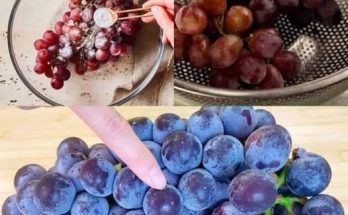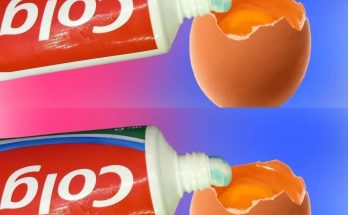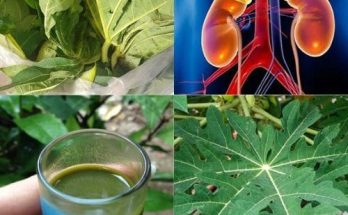Lactuca serriola, commonly known as Prickly Lettuce or Wild Lettuce, is a versatile plant that has been used for its medicinal properties for centuries. This plant, often regarded as a weed, contains numerous compounds that can be harnessed at home for a variety of purposes. In this article, we will focus on the most practical homemade uses of Prickly Lettuce and the many health benefits it provides.
Homemade Uses of Prickly Lettuce
- Homemade Tinctures
Prickly Lettuce can be turned into a tincture by soaking its dried leaves and sap in alcohol. A tincture can be used for pain relief, as a sleep aid, or to calm anxiety. Simply take a few drops under the tongue or dilute in water. - DIY Herbal Tea
To make a calming tea, dry the leaves and steep them in hot water for about 10 minutes. This tea helps with digestion, sleep issues, and respiratory health. It’s often sweetened with honey to counterbalance the bitterness. - Poultices for Skin
Crush fresh Prickly Lettuce leaves and apply them directly to inflamed or irritated skin. This is a natural way to treat rashes, bites, and minor skin irritations. The plant’s anti-inflammatory properties help soothe the skin. - Capsules for Daily Use
Prickly Lettuce can be dried and ground into a fine powder, which can then be placed in capsules. These capsules can be taken daily to boost the immune system, aid digestion, or reduce anxiety. - Infused Oils
Make an infused oil by soaking the leaves of Prickly Lettuce in a carrier oil like olive or coconut oil. This oil can be applied to sore muscles or joints to reduce pain and inflammation. - Ointments for Topical Relief
Turn Prickly Lettuce into an ointment by mixing its extract with a base, such as beeswax or coconut oil. This homemade ointment can be used for soothing localized pain or treating skin issues. - Fresh Salad Greens
Although bitter, Prickly Lettuce leaves can be eaten fresh in salads. They are often mixed with milder greens to balance the taste. Fresh consumption is ideal for digestive health and mild detoxification. - Herbal Steam Inhalation
Boil Prickly Lettuce leaves in water, then use the steam for inhalation. This method is excellent for clearing the sinuses and respiratory passages, making it useful for colds, allergies, or asthma. - Natural Sleep Aid in Honey Syrup
You can make a homemade syrup by boiling the leaves and stems in water and mixing it with honey. This syrup helps improve sleep and reduce anxiety. - Dry Leaves for Herbal Sachets
Dry the leaves and store them in cloth sachets. These sachets can be placed under pillows to promote better sleep or placed in drawers to repel insects. - Topical Compress for Sore Joints
Prepare a compress by soaking Prickly Lettuce leaves in warm water, then apply to sore joints or muscles. This compress helps alleviate pain from arthritis or general soreness. - Homemade Lozenges for Coughs
Mix Prickly Lettuce extract with honey and form it into small lozenges. These lozenges are effective for soothing sore throats and reducing cough symptoms. - Natural Detox Bath
Add dried Prickly Lettuce leaves to your bathwater. The anti-inflammatory properties of the plant will help soothe irritated skin, reduce inflammation, and relax the body. - Herbal Salve for Burns
Mix the sap or extract of Prickly Lettuce with aloe vera gel and apply to minor burns. This homemade salve provides a cooling effect and helps the skin heal more quickly. - Make Prickly Lettuce Juice
You can juice the leaves for a bitter but detoxifying beverage. Drinking a small amount can help with digestion and support liver health.
30 Health Benefits of Prickly Lettuce
- Pain Relief
Prickly Lettuce contains lactucins that help alleviate pain, making it a natural alternative to over-the-counter painkillers. - Improves Sleep
The sedative properties of Prickly Lettuce make it an effective remedy for insomnia and restlessness. - Reduces Anxiety
It acts as a mild relaxant, helping reduce stress and anxiety levels. - Eases Respiratory Issues
Its anti-inflammatory properties help soothe respiratory problems such as bronchitis and asthma. - Promotes Digestive Health
The bitterness of Prickly Lettuce stimulates bile production, aiding in digestion and improving gut health. - Liver Detoxification
The plant supports liver function and helps detoxify the body by stimulating the liver to remove harmful substances. - Reduces Inflammation
Prickly Lettuce contains natural anti-inflammatory compounds, which are effective in reducing pain and inflammation. - Boosts Immune System
Rich in vitamins, especially vitamin C, Prickly Lettuce helps strengthen the immune system. - Soothes Skin Irritation
Its topical application reduces redness, irritation, and itching, making it useful for skin conditions like eczema and rashes. - Helps with Arthritis
The anti-inflammatory properties of Prickly Lettuce provide relief from joint pain associated with arthritis. - Reduces Oxidative Stress
The antioxidants in Prickly Lettuce help neutralize free radicals, protecting the body from oxidative damage. - Treats Mild Fevers
Traditionally, Prickly Lettuce has been used to reduce fevers due to its cooling and anti-inflammatory effects. - Soothes Coughs
Prickly Lettuce is a natural expectorant that can help clear mucus and reduce cough symptoms. - Helps with Asthma
The plant’s anti-inflammatory properties can help reduce the severity of asthma symptoms. - Promotes Wound Healing
Applied topically, it can accelerate the healing of minor wounds and burns. - Acts as a Diuretic
It has mild diuretic properties, which help with fluid retention and support kidney function. - Reduces Headaches
Prickly Lettuce can be used to alleviate tension headaches and migraines. - Supports Cardiovascular Health
By reducing inflammation, Prickly Lettuce can support heart health and reduce the risk of cardiovascular issues. - Improves Skin Health
The plant is rich in compounds that improve the health and appearance of the skin. - Relieves Toothaches
A poultice of Prickly Lettuce leaves can be applied to the gums to help relieve toothache pain. - Aids in Weight Loss
Due to its digestive benefits and ability to improve bile production, Prickly Lettuce can support weight loss efforts. - Supports Bone Health
Rich in calcium, Prickly Lettuce can help strengthen bones and prevent osteoporosis. - Helps Control Blood Sugar
The plant has properties that may help regulate blood sugar levels, making it beneficial for people with diabetes. - Anti-aging Effects
The antioxidants in Prickly Lettuce help combat the signs of aging by protecting the skin and body from free radical damage. - Treats Minor Burns
The sap from the plant can be used to treat and soothe minor burns and skin irritations. - Improves Mood
Its calming effects can help stabilize mood swings and improve mental clarity. - Helps Relieve Menstrual Cramps
Prickly Lettuce can help alleviate the pain and discomfort associated with menstrual cramps. - Reduces Allergy Symptoms
Its anti-inflammatory and immune-boosting properties can help reduce the severity of allergic reactions. - Supports Eye Health
The antioxidants and vitamin content in Prickly Lettuce contribute to better eye health and may reduce the risk of cataracts. - Promotes Hair Health
Rich in vitamins and minerals, it can help improve hair health and reduce hair loss.
Prickly Lettuce (Lactuca serriola) offers a multitude of health benefits and can be used in various homemade remedies. Whether you’re looking for a natural pain reliever, a sleep aid, or a remedy for skin issues, this plant has you covered. By incorporating Prickly Lettuce into tinctures, teas, poultices, or other homemade solutions, you can enjoy the numerous health benefits it provides. As with any herbal remedy, consult a healthcare professional before use, especially if you have underlying health conditions.
Disclaimer: Although Prickly Lettuce has many potential benefits, it’s important to use it responsibly. Overuse or improper preparation can lead to side effects such as drowsiness or digestive upset. Always seek advice from a healthcare provider before introducing any new herbal remedies, especially if you are pregnant, breastfeeding, or taking medications.



